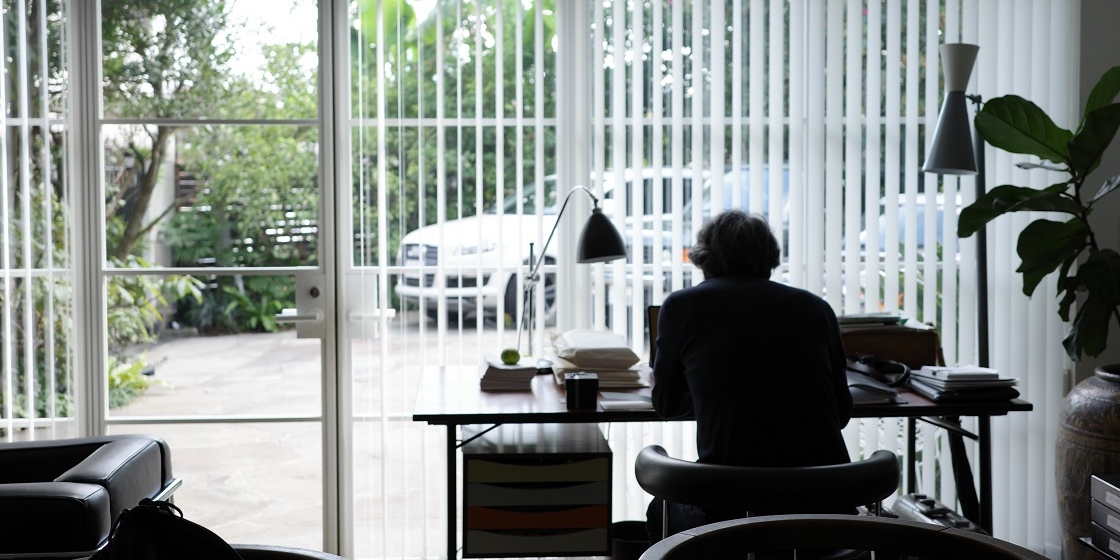
After Shooting "at Home July ・August 2021"
Hello! It's Machuko@, the admin.
The 9th SPECIAL is an interview with Yoshihiko Ueda, who shot the photo for us with two GRs - GR III and GR IIIx - upon the release of GR IIIx.
On a sunny day in late September, it was so hot as if the summer heat had returned. Starting with a behind-the-scene story about his work "at Home July ・ August 2021", I asked him about photography, camera, and GR.
- The first thing I want to ask you is the reason why you accepted our offer. Last time I came here, I was worried if you would accept it. So when you said "Let's do it", I was so delighted and surprised at the same time that I thought I had misheard you or I was having a dream.
I have a long relationship with GR. Maybe it was in 1999, when I took pictures of Daido Moriyama for a series called “PORTRAIT”. He said to me "Let me show you something good" and took his GR1 (film camera) out of his pocket. Just then, it thundered. He looked so great taking my picture with it. I remember taking photos of each other. My relationship with GR began then.
The photobook I created after that is "at Home" and most of the photos in the book were taken with the Leica and the GR1.
-In other words, you were willing to accept our offer because you had a long relationship with GR.
That's right. For me, the GR is a camera I intimately relate to and an important camera for my photography, so I was happy to accept your offer.
In many ways, it's a very important "camera to meet" for me, in my life and when thinking about photography, like Leica.
GR has a lot in common with Leica. It can shoot fast, fits in your hand, and is easy to manipulate. It's a simple tool. There is nothing extra. You have a sense of security and reliability for what it does. And it is not biased, including the lens, it feels neutral.
This time, I shot with the GR III that I had been using for quite some time and the new GR IIIx. It was comfortable using the new one, it felt the same. 40mm is good. I felt it was almost the same as my visual field. It fit me well physiologically.
So, I often shot with the 40mm first (laughs).
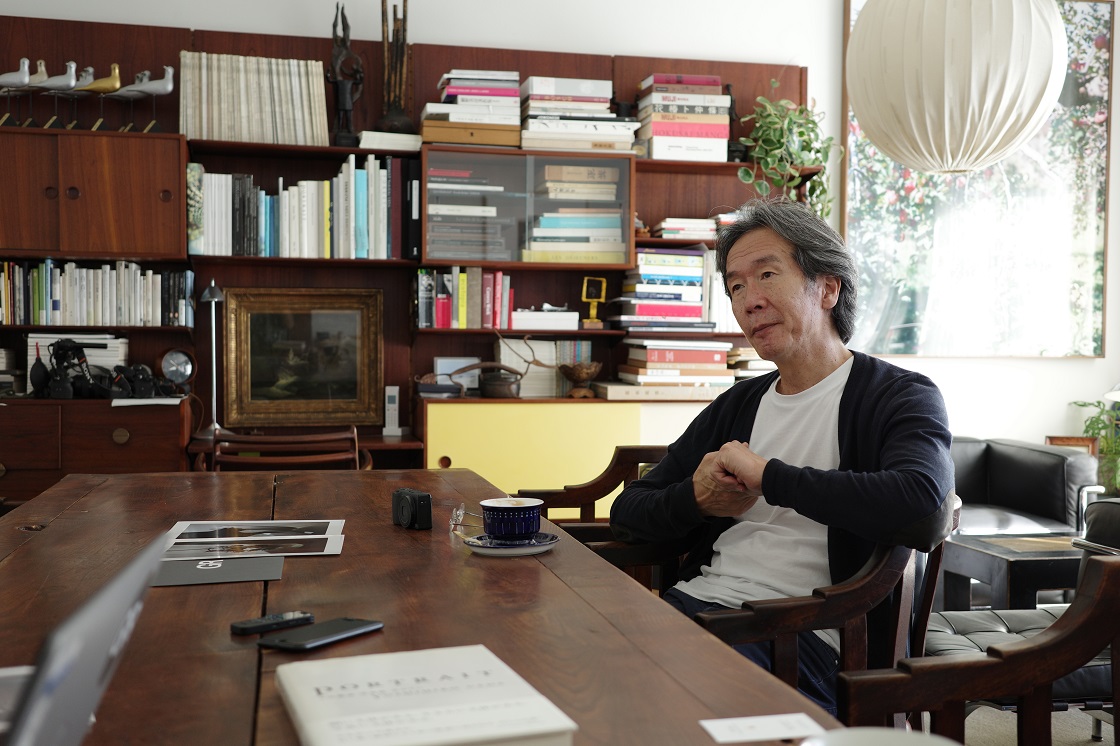
-In a good way, it was hard to tell which camera you used for your photographs. It was often 28mm when I thought it was 40mm, or vice versa. In a sense, I thought it was GR-like. What was your impression after shooting with them?
40mm and 28mm, both were perfect for me in terms of looking at everyday life. In the times we have never experienced, as a result, I again was able to take pictures of my family and my closest place through the GRs. They have become important photos for me.
I used to take a lot of pictures of my son and daughters when they were still small. When your children reach a certain age, you tend to stop taking their pictures. But you want to keep shooting, to be honest. Everyday is the most precious time for me, and it makes me realize what my joy is. In that sense, too, I'm glad that the work has become like a sequel of "at Home."
-At first, did you consider taking street photos?
When it comes to "creating a new work", I instinctively think about "going out". I thought it would be great to capture the complexity of the city of Tokyo in these times when there was an interesting contrast between the COVID-19 and Olympic buzzes and the ghost city, mixed feelings of the people. So I tried to go out to shoot several times.
Seeing the situation being too complicated to comprehend and all people wearing masks, I thought I wanted to make it a lot simpler. Accepting the situation and the outside complication, I began to think about taking pictures of my family and my immediate place.
Slowly but surely I started to feel strongly it was more significant to me. I didn't feel like pressing the shutter outside any more. Taking photos outside meant taking photos of something I didn't really comprehend. I questioned myself how important it was to me.
-In the end, the work became like a sequel of "at Home". Did you have that kind of plan when you started shooting?
No, I didn't plan it. I usually start selecting images only after there's nothing more to take. Ideas come later when selecting.
-Don't you look back at your photos while you are still shooting?
No, I don't. I just take as many as I can. If you decide on a certain idea or direction, say "I'm going to take landscape" in advance, you will limit yourself. You won't take pictures of anything else, or you won't even look at them.
But the truth is, you see a whole lot of things every day. I believe "photograph" is a quick shot of what sparks into you. I think that's the way to go.
Sometimes I decide on a theme, too. I used to shoot like portraits only or forests only, but now I don't do it that way.
-In the GR III magazine book (published by Impress), you said, "Don't let your thoughts catch up with you."
That's "From the Hip", isn't it? It's so true to me now. It's important to shoot before your thoughts catch up with you. I think you can do that very well with the GR. It gives shape to it.
- Don't you think your work is a "photograph" because you, Mr. Ueda, are making it? For example, a person with little experience of photography may not be able to make a photograph like yours even if he/she does what you have just said. After all, his/her perspectives in life are reflected in the photographs.
For example, if someone wants to take pictures like mine with the GR and tries to pursue it, he/she won't be happy. I'm not saying it in a negative sense. By continuing to be yourself and face your own family or something close to you and take pictures when you find something that sparks you, they will become your own photographs. If I see their work, I'll probably feel great, because I can never encounter and shoot those moments.
Never think about making a "good picture”. Just be yourself and capture the "now" that sparks you. The moment of your existence, what you witnessed are recorded as long as you use your camera properly. I think that's wonderful.
It's not about composition, balance, color, etc. Thinking about those things won't take you anywhere, makes your photos very rigid. You should do it as freely as you do with your smartphone, take a picture when something sparks you. One by one.
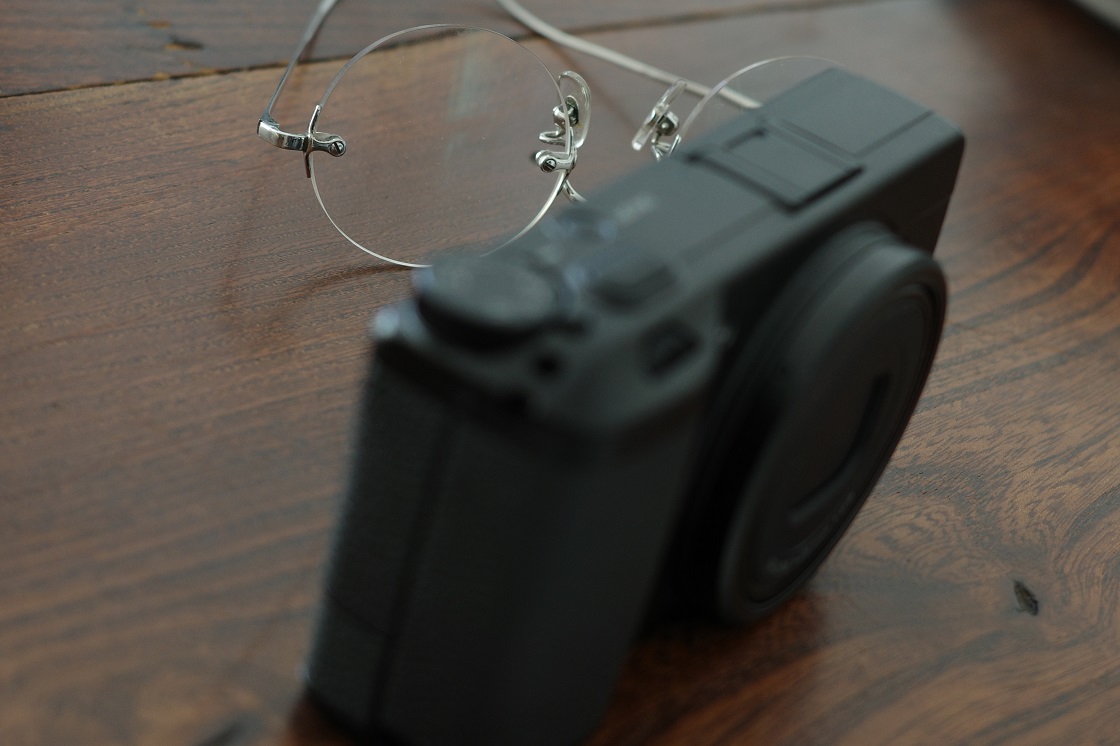
-Speaking of being yourself or being as is, for the catalog work you did for us, you had few corrections in color proofing. You let us print the colors as they were (data straight out of the camera). The printing company did their job as you had told, and they were beautifully finished.
Outputting the information straight makes it possible to visualize the momentary and miraculous aspects of photography. The richest thing is to show what the picture has without anyone touching it.
Adding something in the post process, adding blue because you remember the sky was bluer for example, would subtract what was originally there and make the image even poorer. So, I like to look for a neutral point of the image, an unbiased point.
I avoid adding too much to the image just because I have a special feeling about it. Starting from a straight output will lead you to the richest outcome.
-In digital, it's quite difficult to say the picture is the most beautiful as it is, because you have an assumption that you can make it brighter later, or make some adjustments, you can modify the data later.
A photograph is determined by how much light you receive in here (GR). If you like it, that's perfect. What you see when you take it is exactly what you expect from it. Therefore, in my case, I don't want to make it brighter or darker later in the process.
When something sparks and I take it right away, I know I like it as it is. So, there is nothing I can do about it later.
-Your setting in the GR was quite simple.
Yes, in P mode, Image Control is Standard.
It's the same with printing, the more you try to control it, the worse it gets.
I always think that, at the stage of printing, the best way to do it is to ask them to print it out as it is first, and if it is good enough, I'll start by saying "I like it." That's where our communication and understanding start.
I tell them about the general impression first. I don't talk about details, like this green should be this and that red should be that. If I look at the overall image and like it, that's where to start. I don't mean to be irresponsible, I just think it's important to appreciate things from a broader perspective. The human eyes are amazing, they see everything and can judge them.
But, if you look at one place and say "Hmm, isn't it too red? I want less red here", and that will be reflected in the print. Then, it starts to be like I like it here but not here, and becomes a total mess.
The camera is made in pretty good balance, so I think there is not much you need to do about it later.
On the other hand, there are photographers who want to modulate the data as much as they can to make it closer to their own impression later. Of course, that's their way of doing, and I think that's great, too.
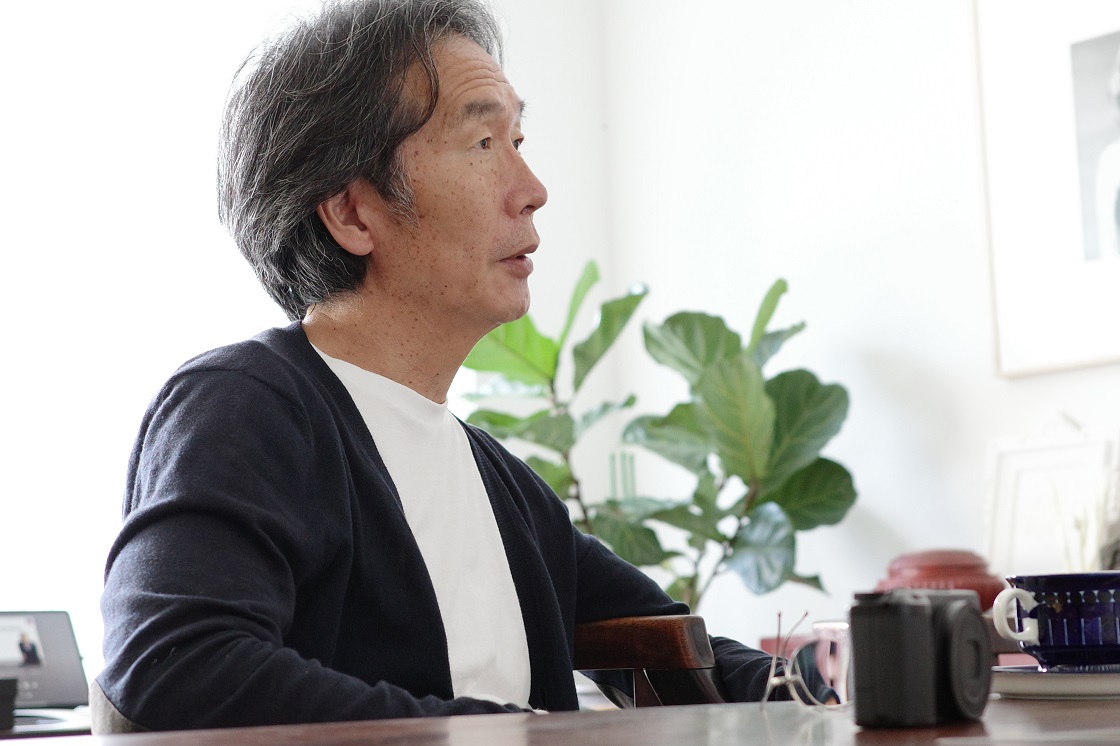
-The same is true for the catalog paper used in Japan. At first, the paper we wanted to use, had a fashionable texture, but you told us you didn't want to give the impression that we were relying on the paper, so we changed it.
As I mentioned earlier, to me, adding nothing means being rich. Overlaying something that does not originally exist makes it poor.
What makes it rich is to think about what to choose in order to get what was originally there as it was.
It is important to know everything is here as they were. The more you decorate it, the more you make up, the less true it will look. You lose sight of what was originally there. Photographs are sensitive to that.
-That is exactly the same as the GR concept. We used this paper for the first time for a catalog. It was quite a discovery. I'm looking forward to the reaction of the people who see it!
It looks like photographic paper, doesn't it? After all, it is significant to print a photo on paper, see it on paper, and make it physical. It's completely different from what you see in data.
I love the idea of enclosing my works in the envelope, a catalog you can decorate. I think that's great.
-Everybody has some times when they can't shoot as well as they want. In such a case, how would you overcome that?
Well, when I can't shoot, I can't shoot (laughs), when I'm not feeling well, for example (laughs). But at one point, I can suddenly begin to shoot a lot.
You can take photos well when you realize what you are looking at, or when you are feeling very free. It's important to have the feeling that you can shoot anything.
And, a feeling of joy is important.
When I'm taking pictures and feeling joy, I can take a lot. Naturally, I can't press the shutter when I'm not feeling anything, you know.
For me, the GR is a trusty camera. As I mentioned in the GR III magazine book, it is a camera that really embodies "From the Hip", which enables you to take a quick shot at the moment you desire.
I always keep it in my pocket. It's there when I walk my dog, too. I regret it if I don't have it (laughs).
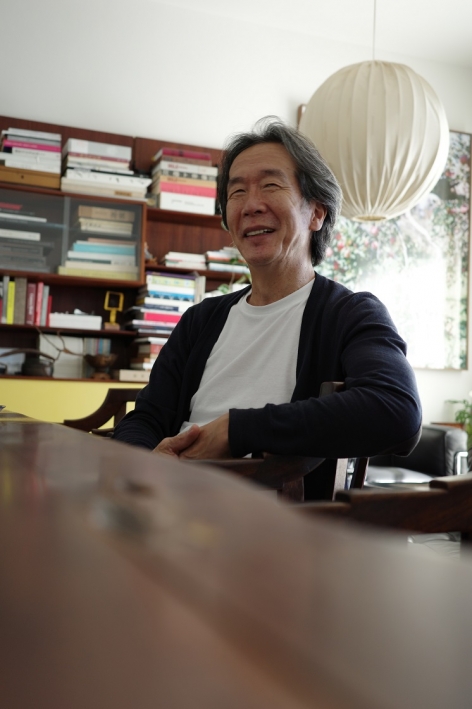
After finishing the interview, Mr. Ueda said softly, "Today is my birthday." It was a great honor to have an interview on such a special day.
You can see Yoshihiko Ueda's work on the GR product site. Please take a look at the gallery as well. In addition, the GR III & GR IIIx catalog has also begun to be distributed at stores in line with the release timing of the GR IIIx in Japan
For the catalog, we wanted to create a catalog with a concept that you can take home the "works" and decorate them, or take a closer look at it. That's why we have enclosed two works by Yoshihiko Ueda in the GR's original special envelope.
-We make something that only paper can convey, photographs you can enjoy on paper.
-Therefore, we leave the product specifications to the website.
-We believe in the power of photography. No cliche or stylish catchphrases that can be used for any camera are necessary.
Valuing these same three ideas as for the previous catalog, this time, we hope you will enjoy taking home the "works". You might ask if this is a catalog, but we believe in the intelligence of the people who pick up the catalog. It's a new challenge based on our GR concept.
We have different enclosed works for Ricoh Imaging Square Tokyo and Ricoh Imaging Square Osaka. Enjoy!
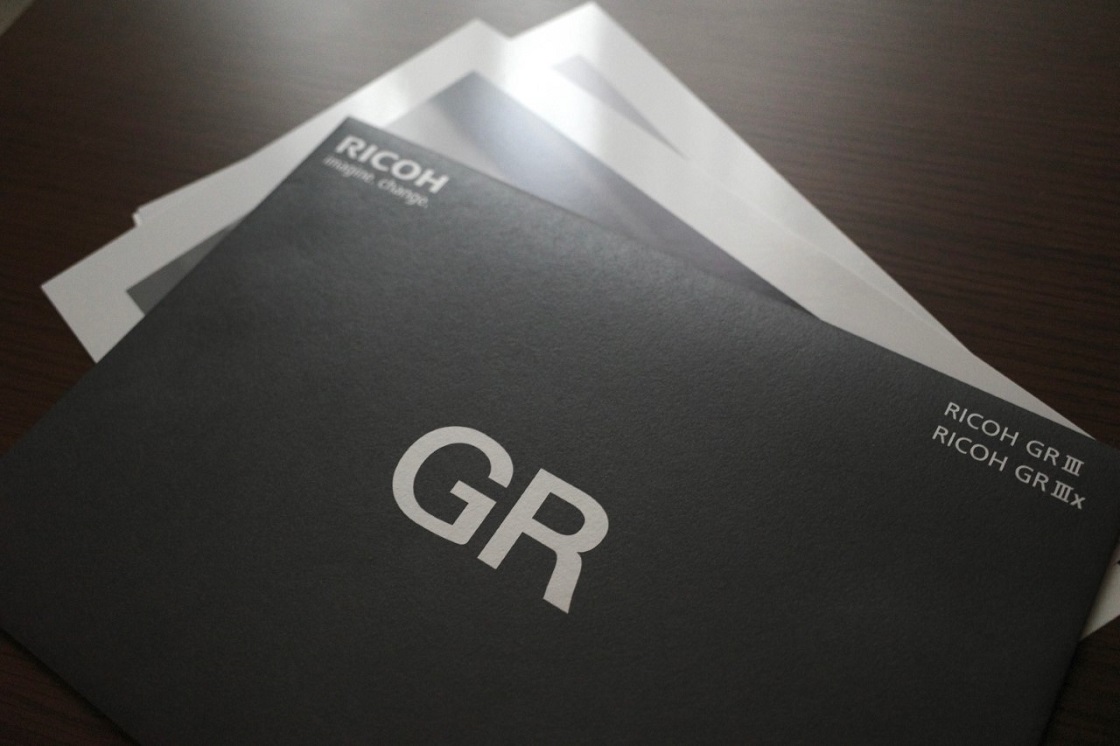
★ Click here for RICOH GR III PERFECT GUIDE (Magazine Book / Impress)
(Machuko@)














